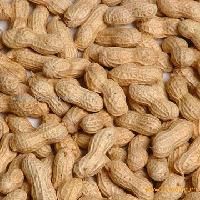Mixed Results from Trial of Peanut Sublingual Immunotherapy
Results from a long-term trial indicate that sublingual immunotherapy, though quite safe, is rarely fully effective in people with severe peanut allergies.

Results from a long-term trial indicate that sublingual immunotherapy, though quite safe, is rarely fully effective in people with severe peanut allergies.
Initial findings, which appeared in 2013 after the completion of the trial’s first year, suggested that the treatment was working: 14 of 20 active participants (70%) were able to safely consume small amounts of peanut powder in a controlled setting.
However, at the end of 3 years, just 4 members of a trial population that had expanded to 40 were able to tolerate 10 g of peanut powder — an amount typically contained in 16 to 18 peanuts — without any reaction.
The sublingual immunotherapy (SLIT) protocol used peanut extract, squirted under the tongue once daily and slowly increased over the months and years, on patients whose baseline ages ranged from 12 to 40 years.
The technique’s safety profile proved excellent. Study participants took a total of 18,165 doses of peanut extract in all, and roughly 98% of those applications produced no reaction beyond oropharynx.
Unfortunately, more than 50% of all the patients who started the immunotherapy at some point dropped out before its completion, though not because of adverse events. The top reason they gave was the difficulty of taking the extract every single day.
When the study period ended, 37 patients were challenged with up to 10 grams of peanut protein. After another 8 weeks with no therapy, there was another 10-gram challenge and an “open feeding of peanut butter” designed to assess sustained unresponsiveness.
Only the 4 patients were able to consume 10 grams in the initial challenge without signs of sensitivity, but all 4 of them were still able to consume the same amount 8 weeks later and, thus, demonstrate sustained unresponsiveness.
On the whole, the study team deemed the results to be neither home run nor strike out.
“Peanut SLIT induced a modest level of desensitization, decreased immunologic activity over 3 years in responders, and had an excellent long-term safety profile,” they wrote in The Journal of Allergy and Clinical Immunology.
“However,” they continued, “most patients discontinued therapy by the end of year 3, and only 10.8% of subjects achieved sustained unresponsiveness.”
The trial results seem particularly underwhelming when compared to recent papers that offer hope for significant reductions in the sort of serious peanut allergy that can cause anaphylaxis and even death.
British researchers, who published their results in The New England Journal of Medicine, divided 640 infants (4 months to 10 months) who had already been diagnosed with severe eczema, egg allergies or both into 2 cohorts by using skin-pricks to test for peanut sensitivity. They then randomly assigned the kids in both cohorts to avoid peanut proteins altogether or to consume 6g per week (in 3 separate meals) until the age of 5.
Among the 530 children who initially tested negative for peanut allergies, the prevalence of peanut allergies at 60 months was 13.7% in the avoidance group and 1.9% in the consumption group (P<0.001). Among the 98 kids who initially tested positive for mild peanut allergies, the prevalence of peanut allergies at 60 months was 35.3% in the avoidance group and 10.6% in the consumption group (P=0.004).
Another trial, this 1 designed to evaluate a skin patch’s ability to increase peanut tolerance led the US Food and Drug Administration to designate the patch a potential breakthrough product.
The trial divided 221 patients among placebo and 3 doses of “epicutaneous immunotherapy:” 50 mcg, 100 mcg and 250 mcg. Half of the 56 patients who used the 250-mcg patch for a year experienced at least a 10-fold increase in their individual peanut protein eliciting dose (ppED) or ended the trial with a ppED ≥1,000 mg.